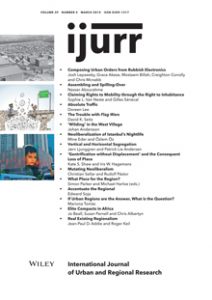In urban studies, New York’s West Village is famous for two principal reasons: as the paradigmatic ideal neighborhood in Jane Jacobs’ influential The Death and Life of Great American Cities and as the site of one of the 1960s’ great urban uprisings, the Stonewall riot in 1969. Today––largely because of the mixed-use urban qualities celebrated by Jacobs––the West Village is one of New York’s most desirable residential areas, yet it also remains an essential part of the city’s queer geography. In this article, I analyze the persistent demonization of the area’s queer youth of color by local neighborhood groups to argue that Jacobs’ celebrated notion of natural surveillance (or what she called ‘eyes on the street’) is fundamentally unsuited for a fluid queer space like the contemporary West Village. First, I historicize the current neighborhood tensions in the context of racialized media reporting of homophobic hate crime. Second, the discourses deployed in contemporary media of ‘wild’ youth terrorizing the Village are examined. Finally, with reference to the forced closure of the African American bar Chi Chiz, I illustrate how the symbolic nightlife economy remains a key target in the city’s regulation of queer space.
Articles
Details
Written by:
Johan Andersson
Digital Object Identifier (DOI)
10.1111/1468-2427.12188
About DOI
Read full article as PDF
Read full article as HTML
See the references for this article

